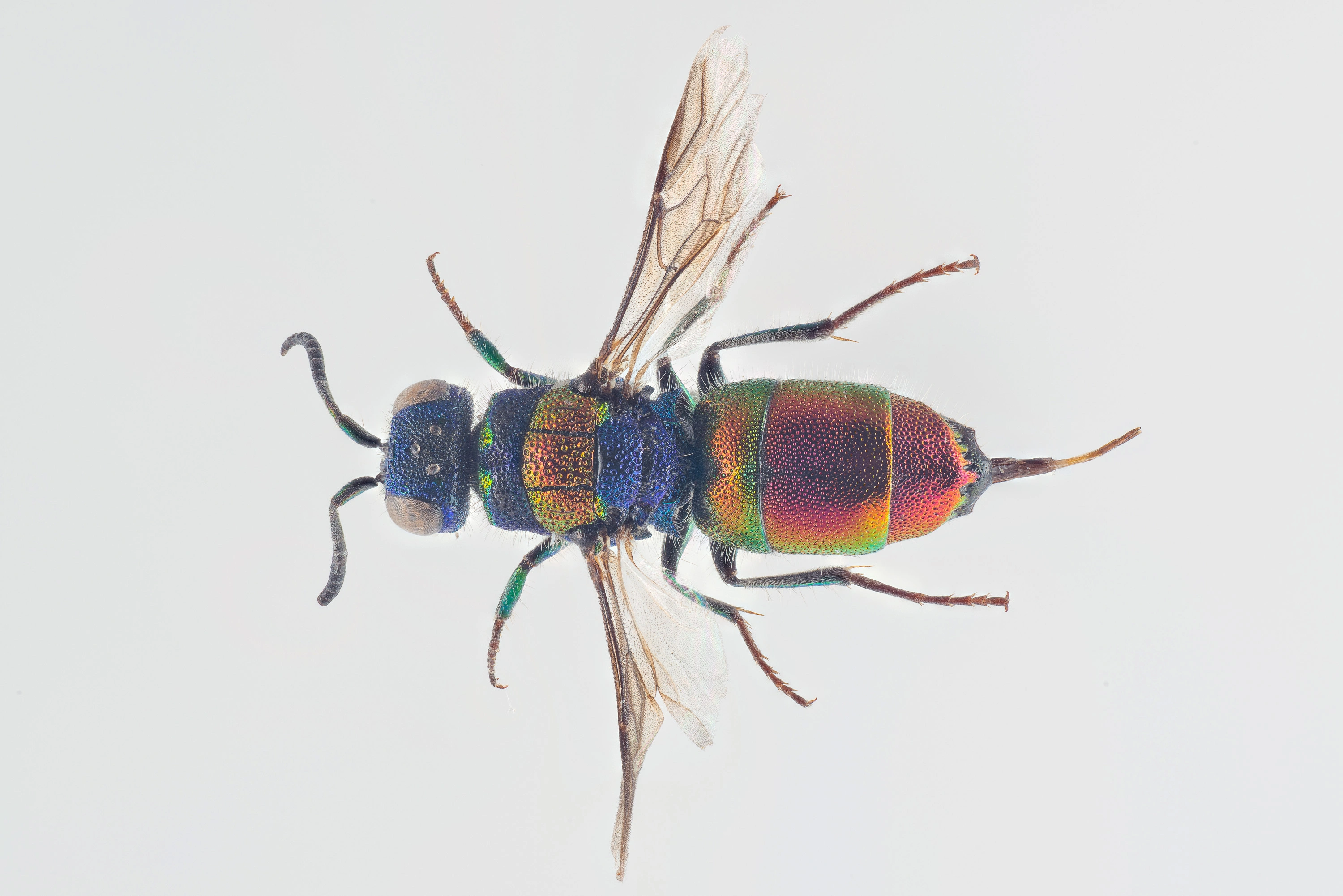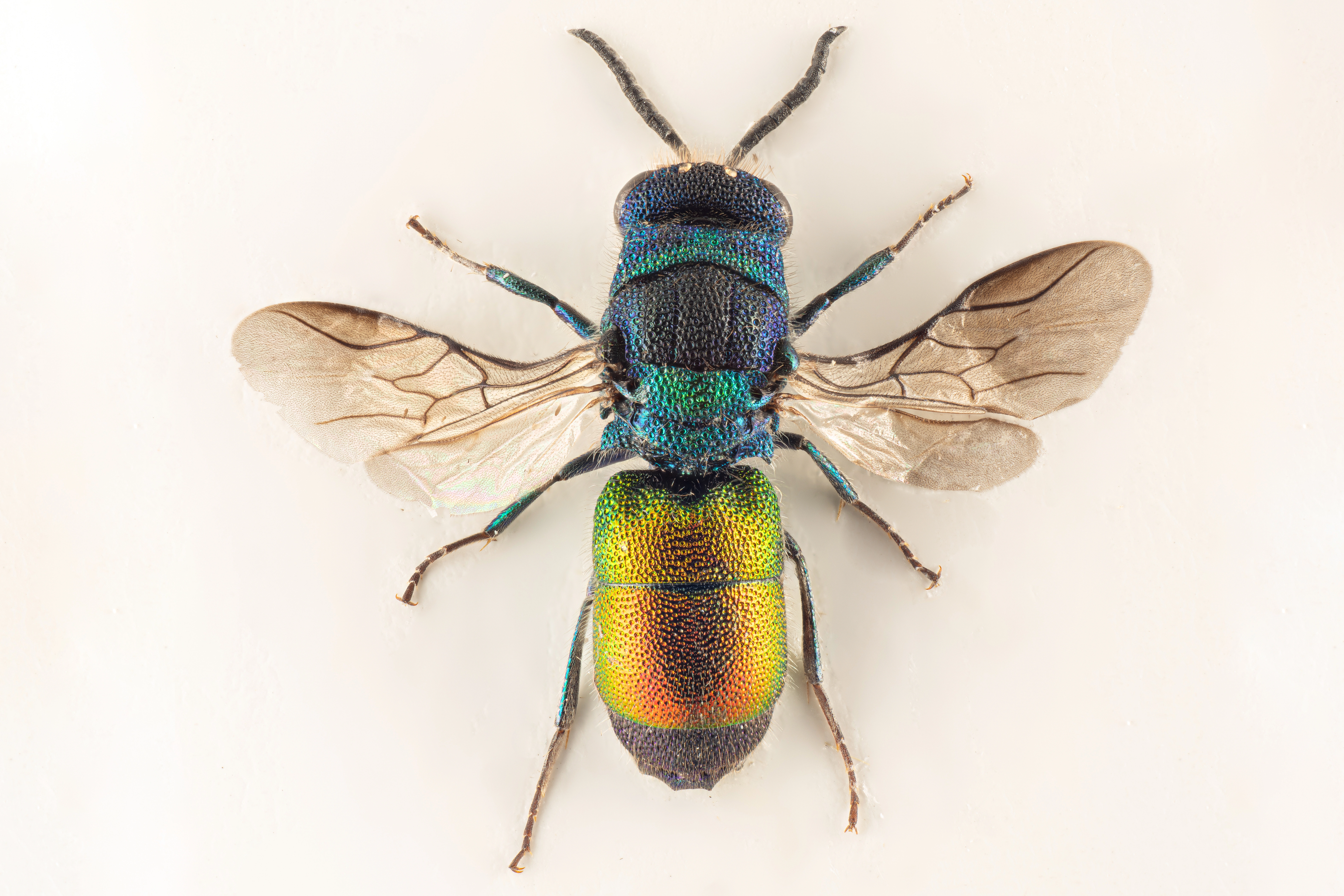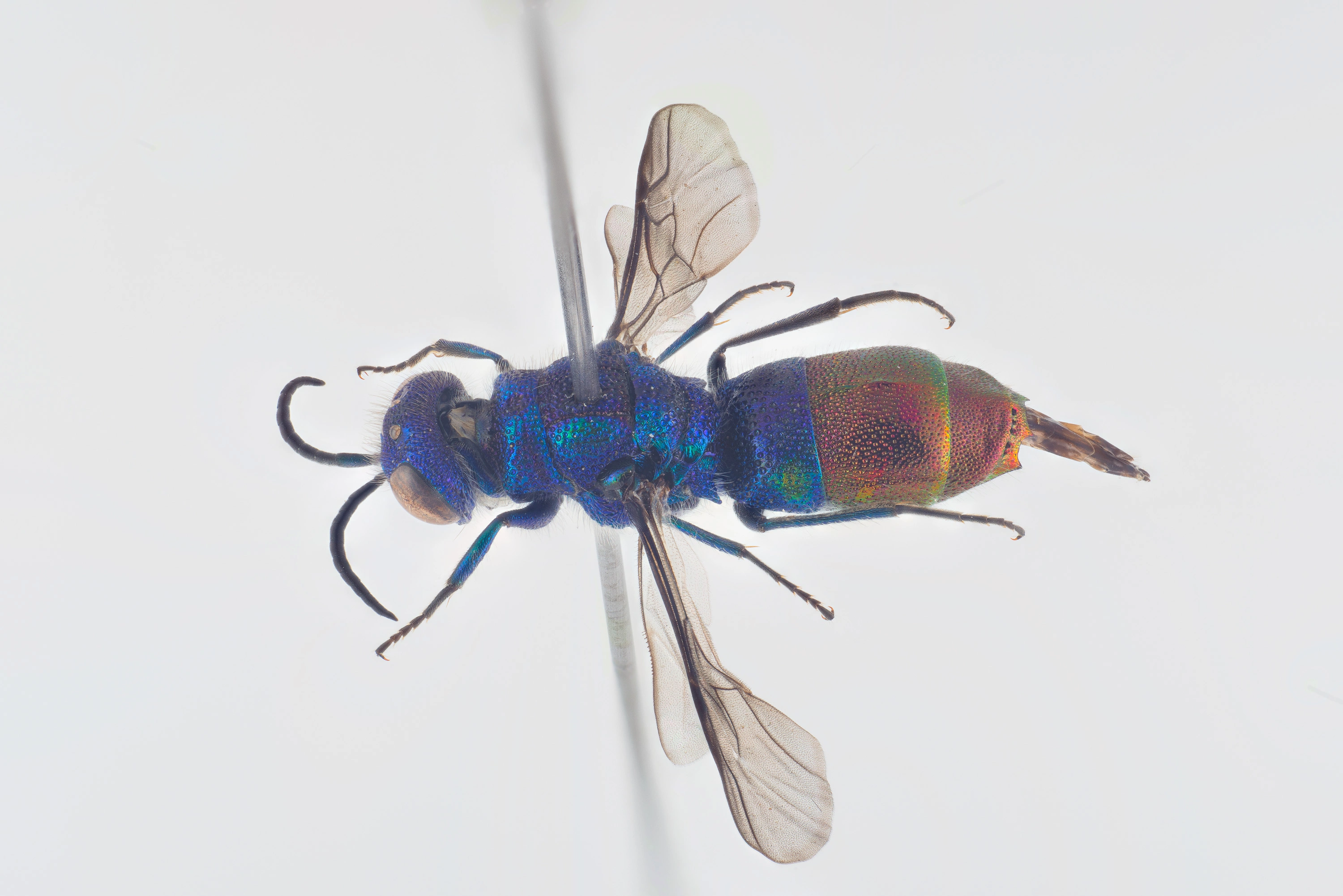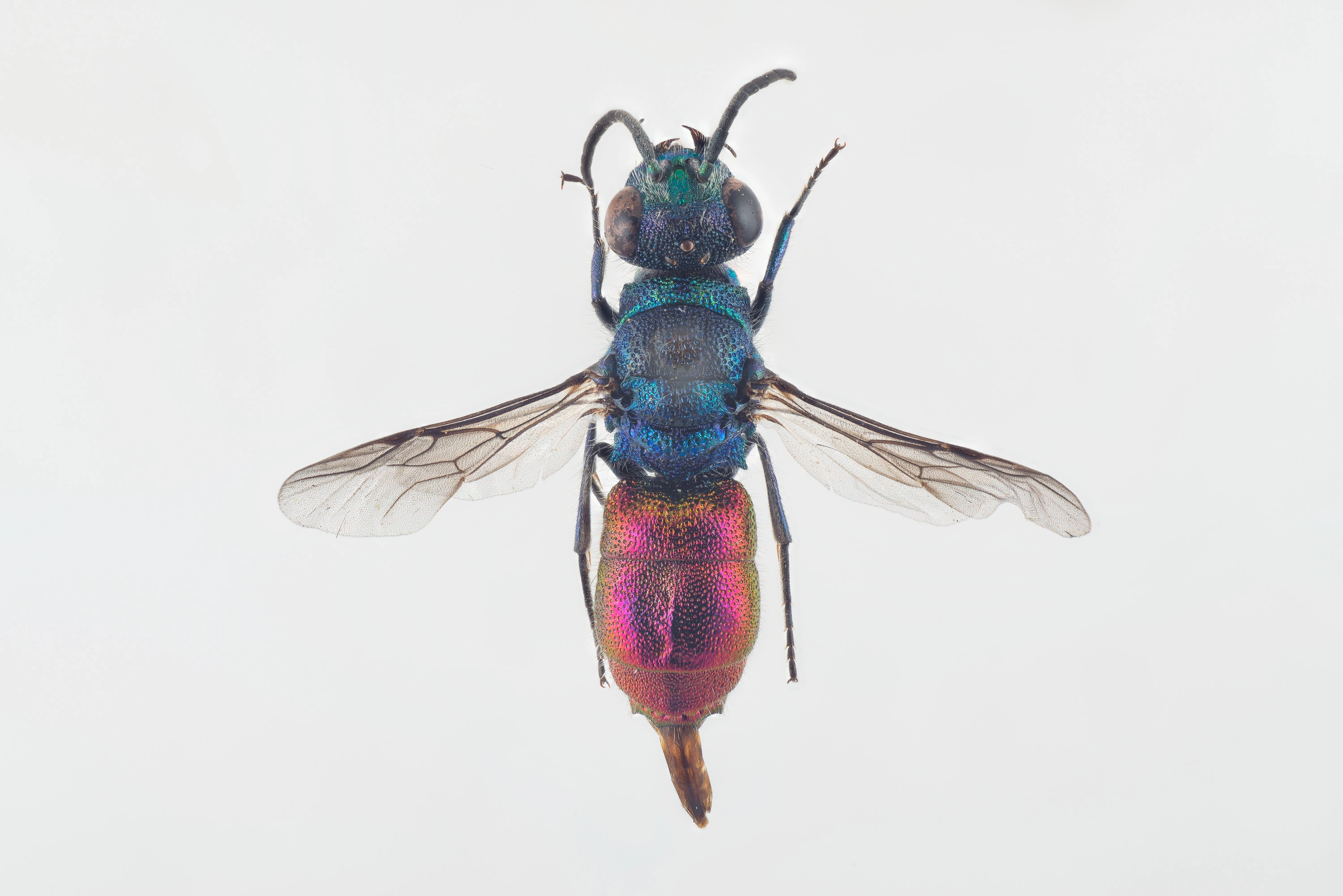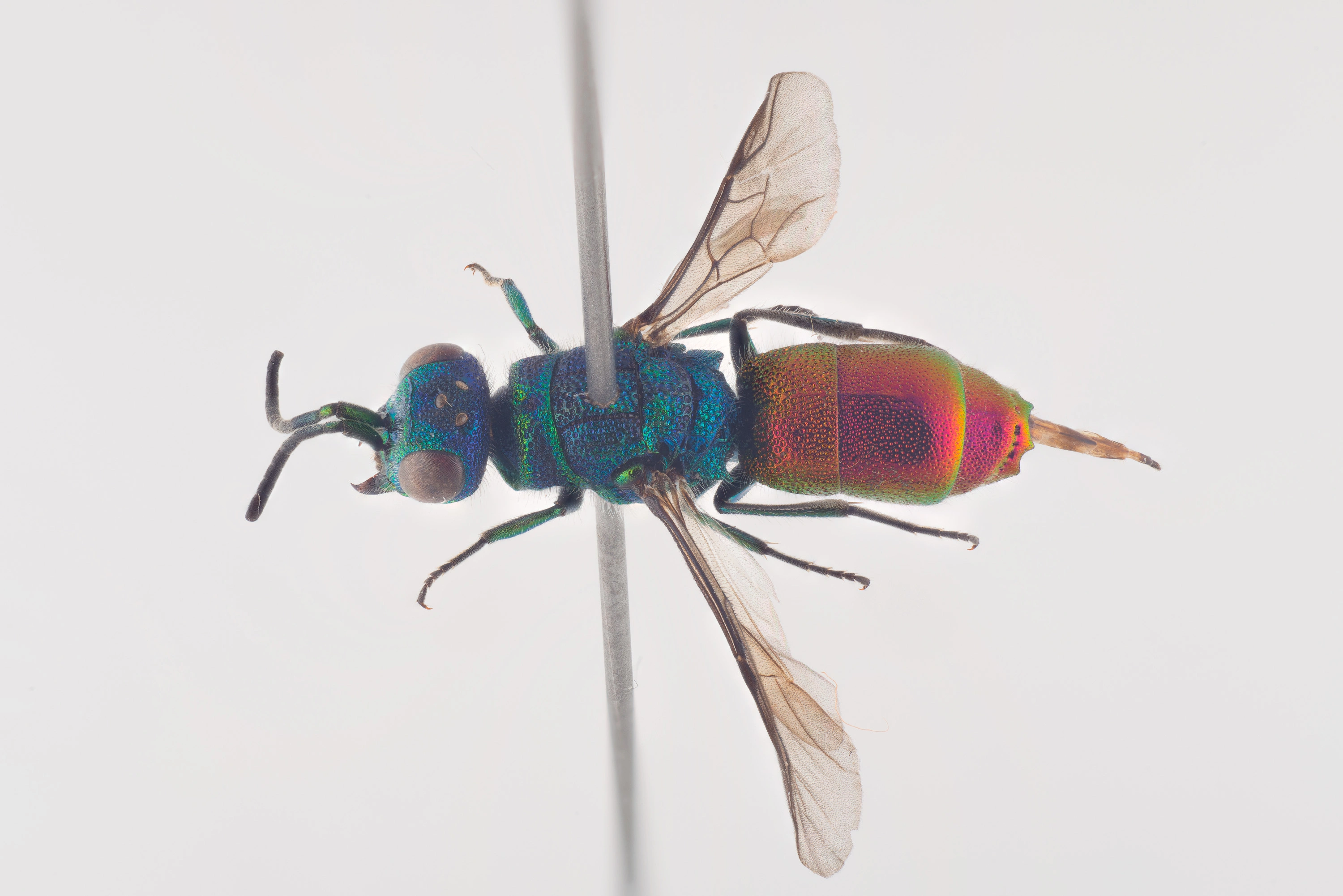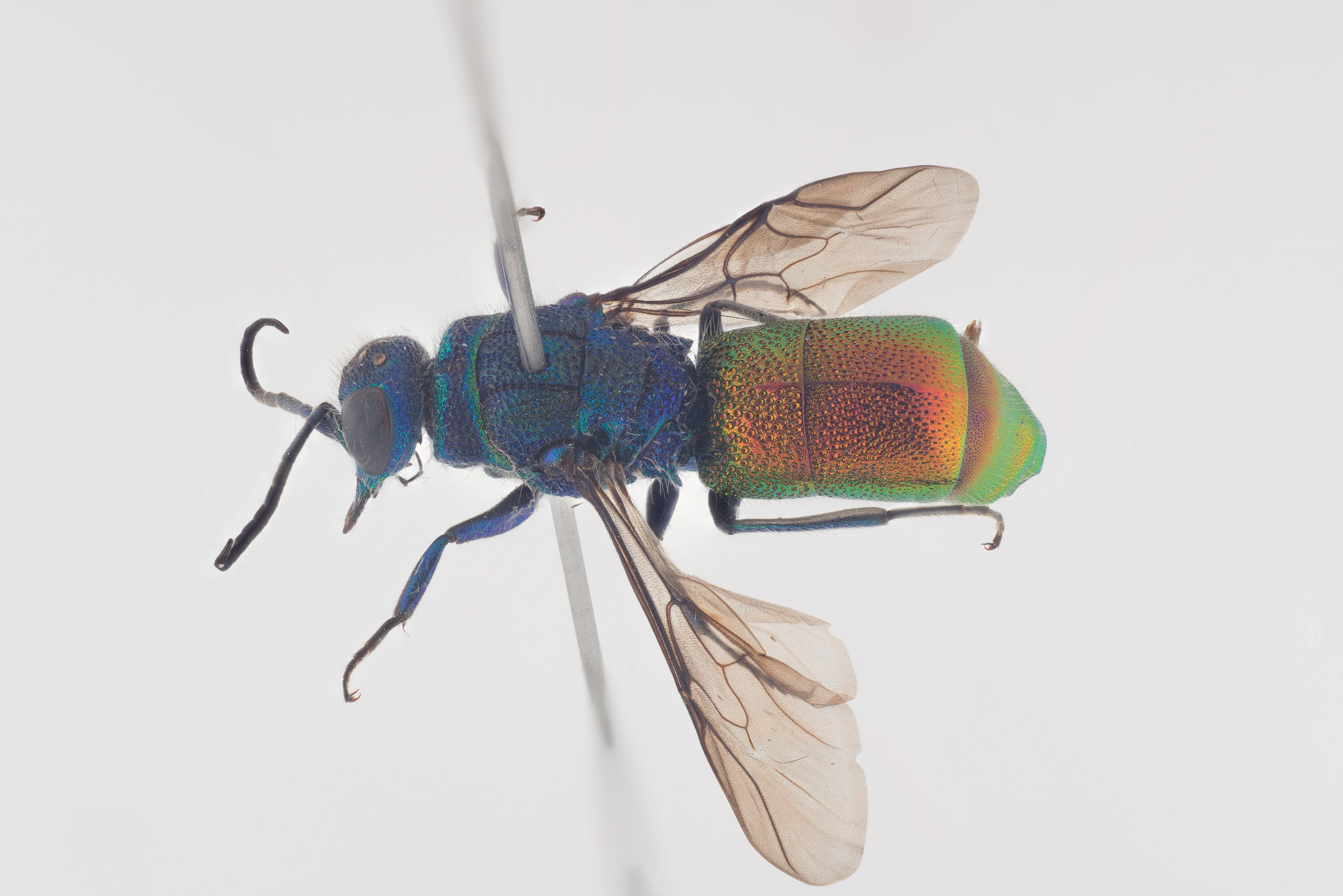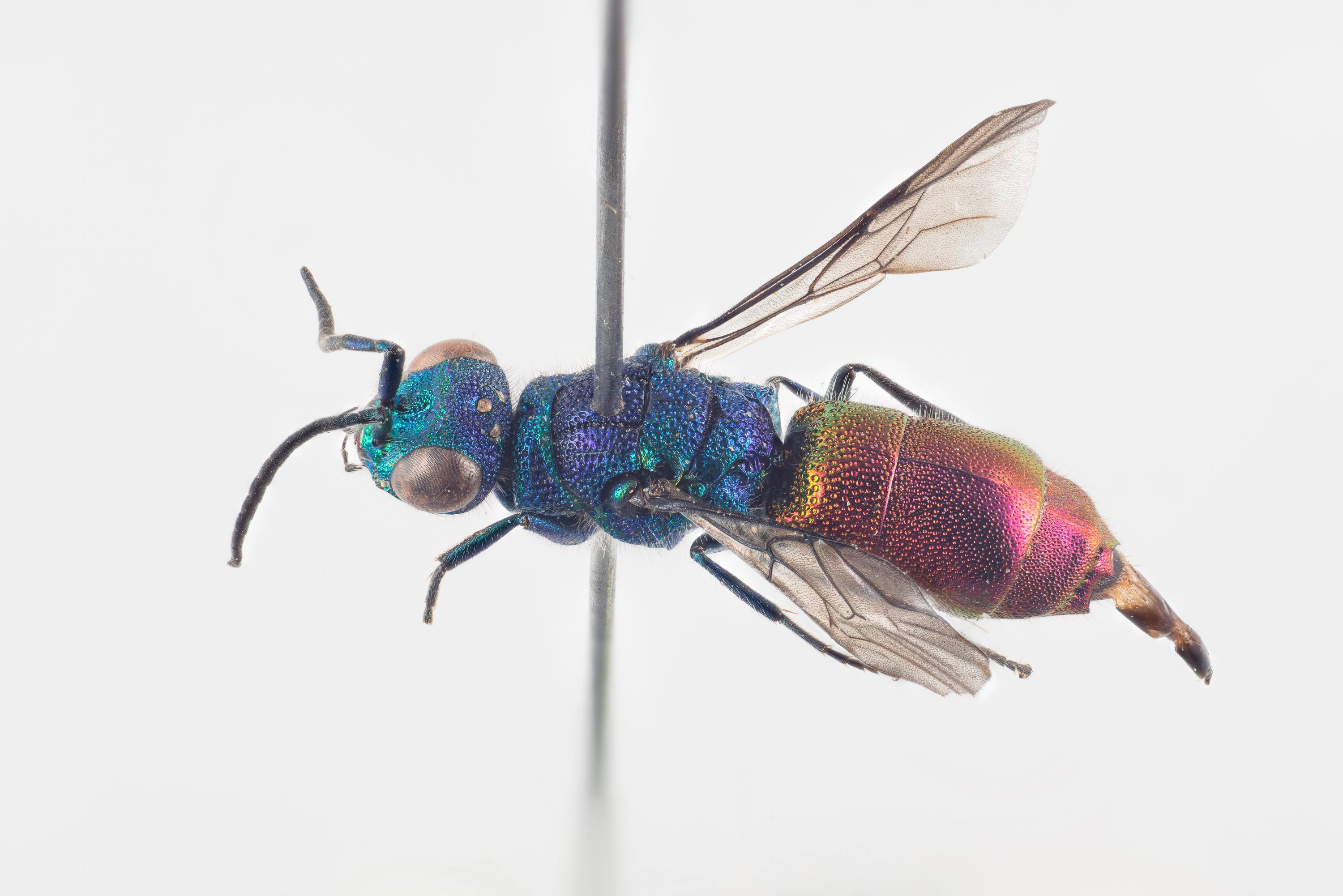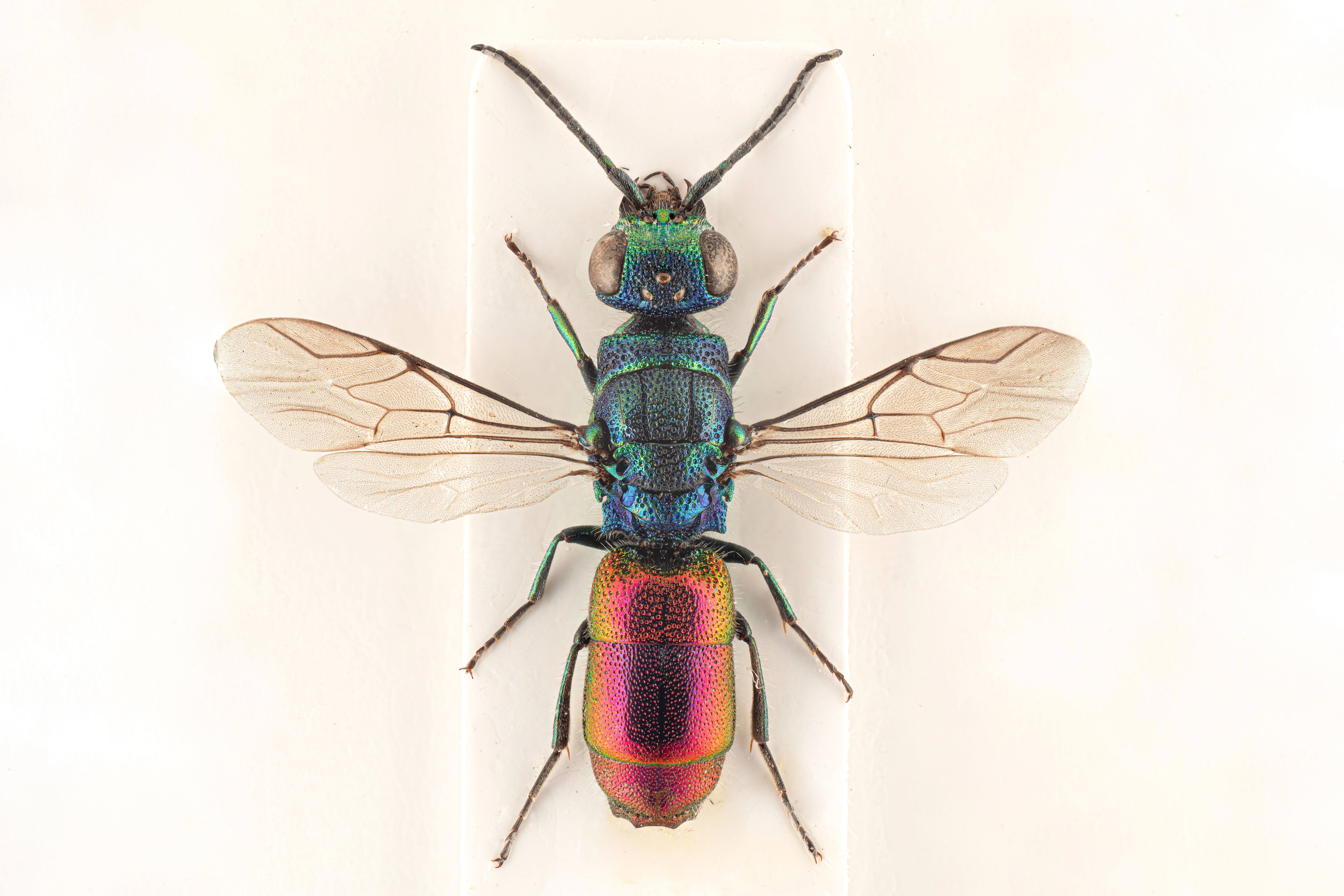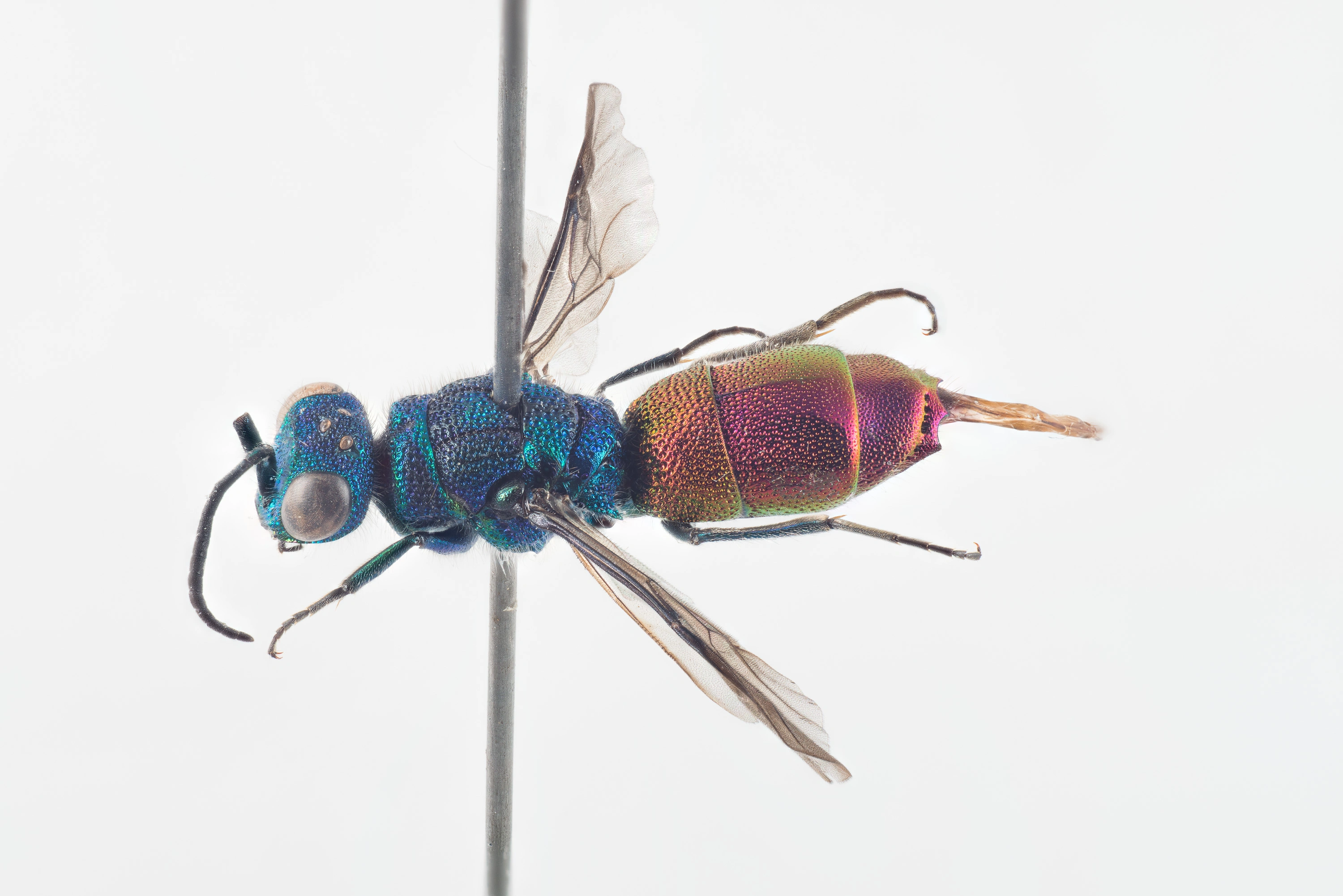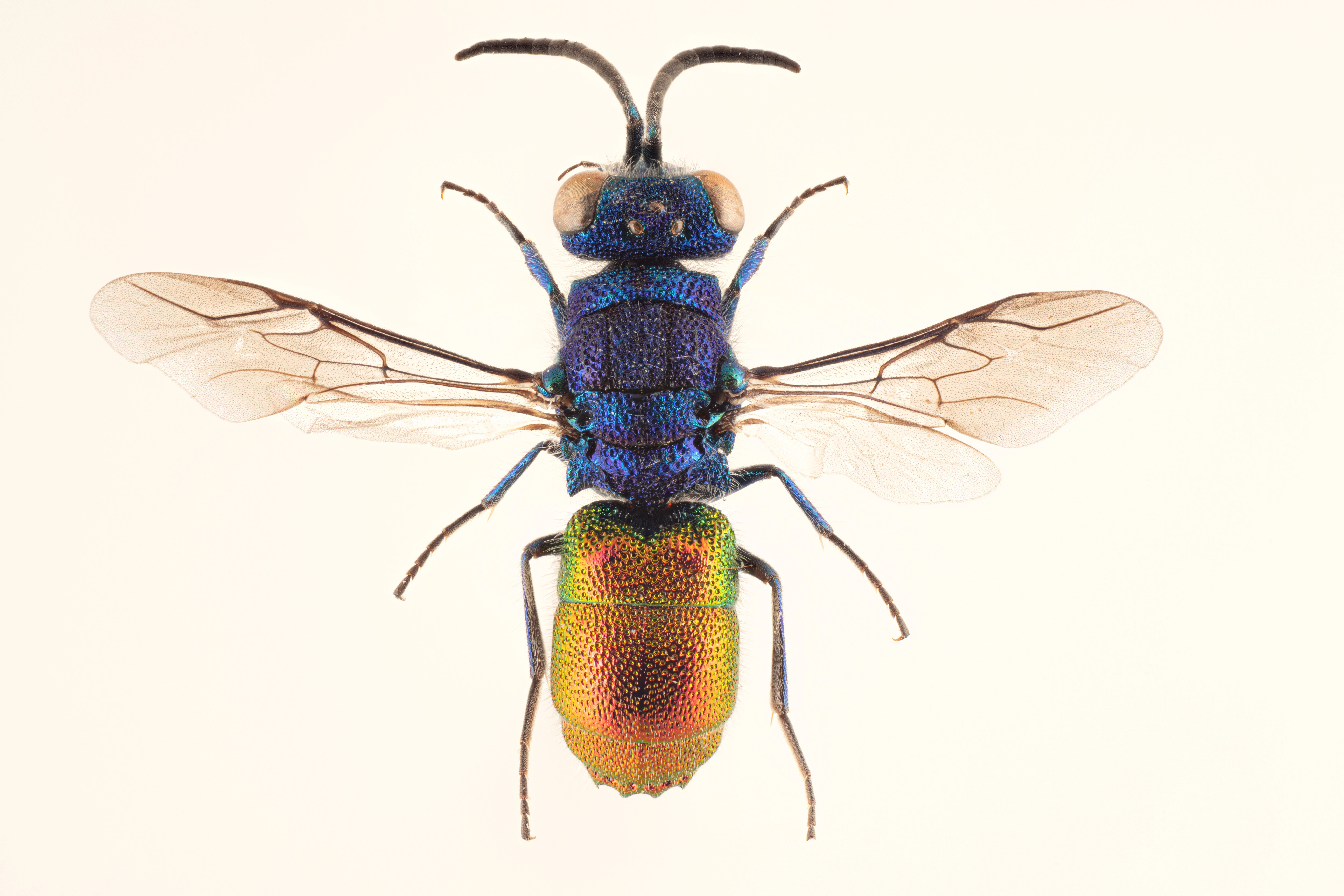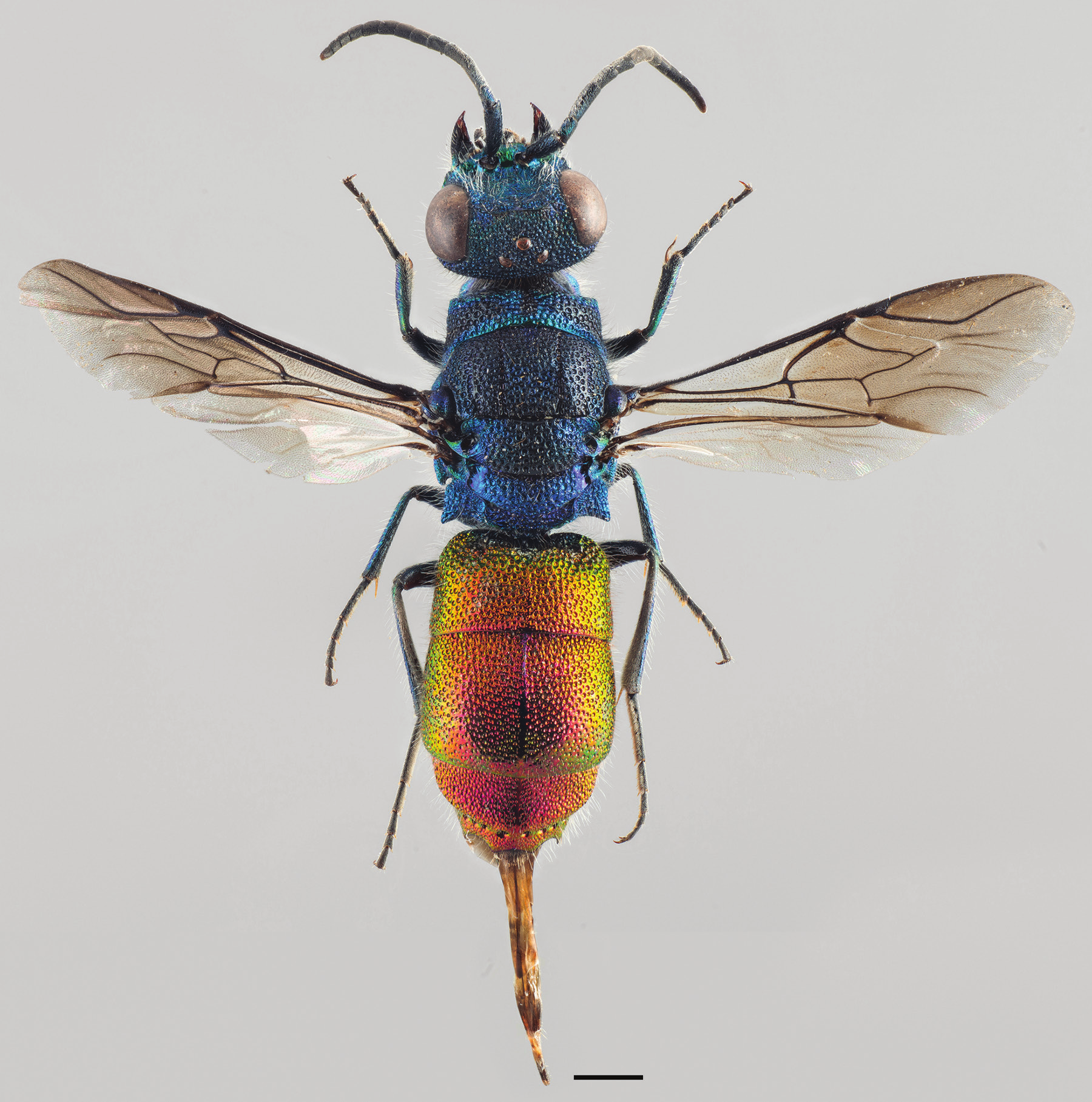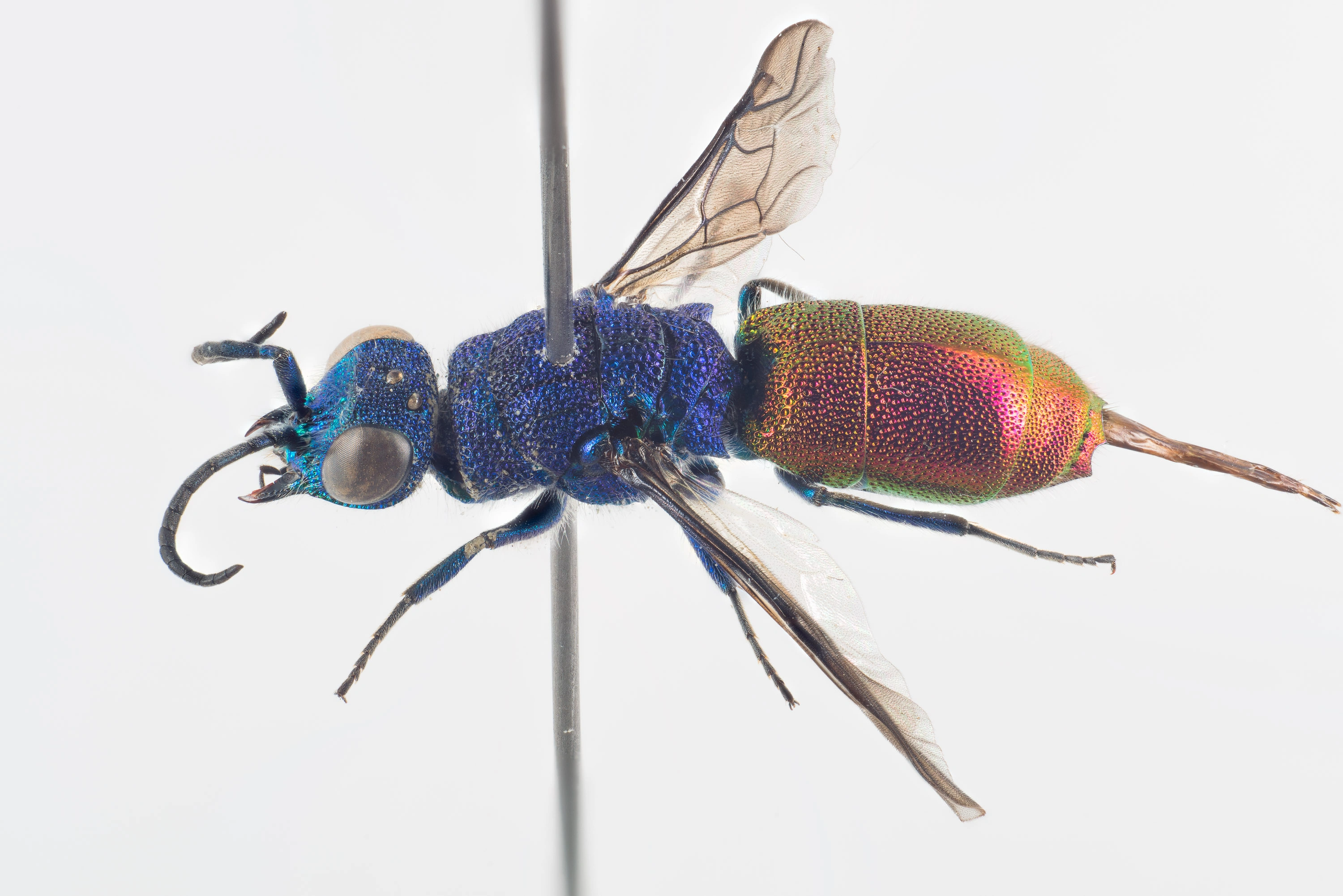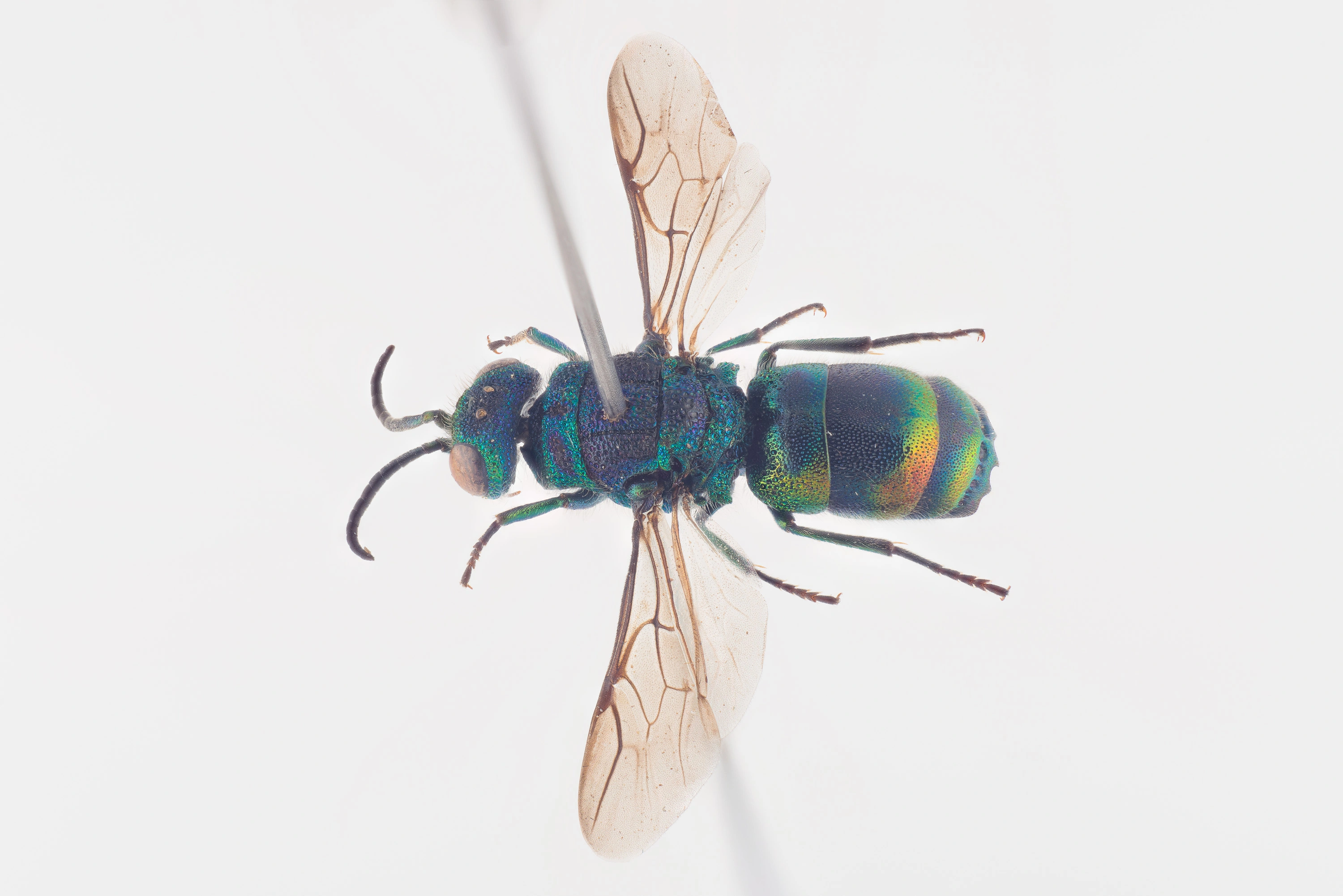Chrysis
With more than a thousand currently recognised species, Chrysis is the largest and most heterogeneous genus of Chrysididae.
It is best defined by a combination of several variable and non-unique characters, such as the closed or nearly closed forewing marginal cell, the usually four- or six-toothed posterior margin of T3, and the usually distinct transverse frontal carina on the frons. Members of the genus parasitise a wide range of solitary wasps and bees in the families Vespidae, Sphecidae, Crabronidae, Megachilidae and Apidae. They are found worldwide, but the vast majority of species is found in the Holarctic and Afrotropical Regions. The European fauna consists of nearly 190 species and numerous subspecies (Rosa and Soon 2012). Up to now, 35 species have been found in the Nordic and Baltic countries (Paukkunen et al. 2014). The genus was first formally divided into species-groups by Linsenmaier (1959). Our classification of the species-groups follows Kimsey and Bohart (1991).

